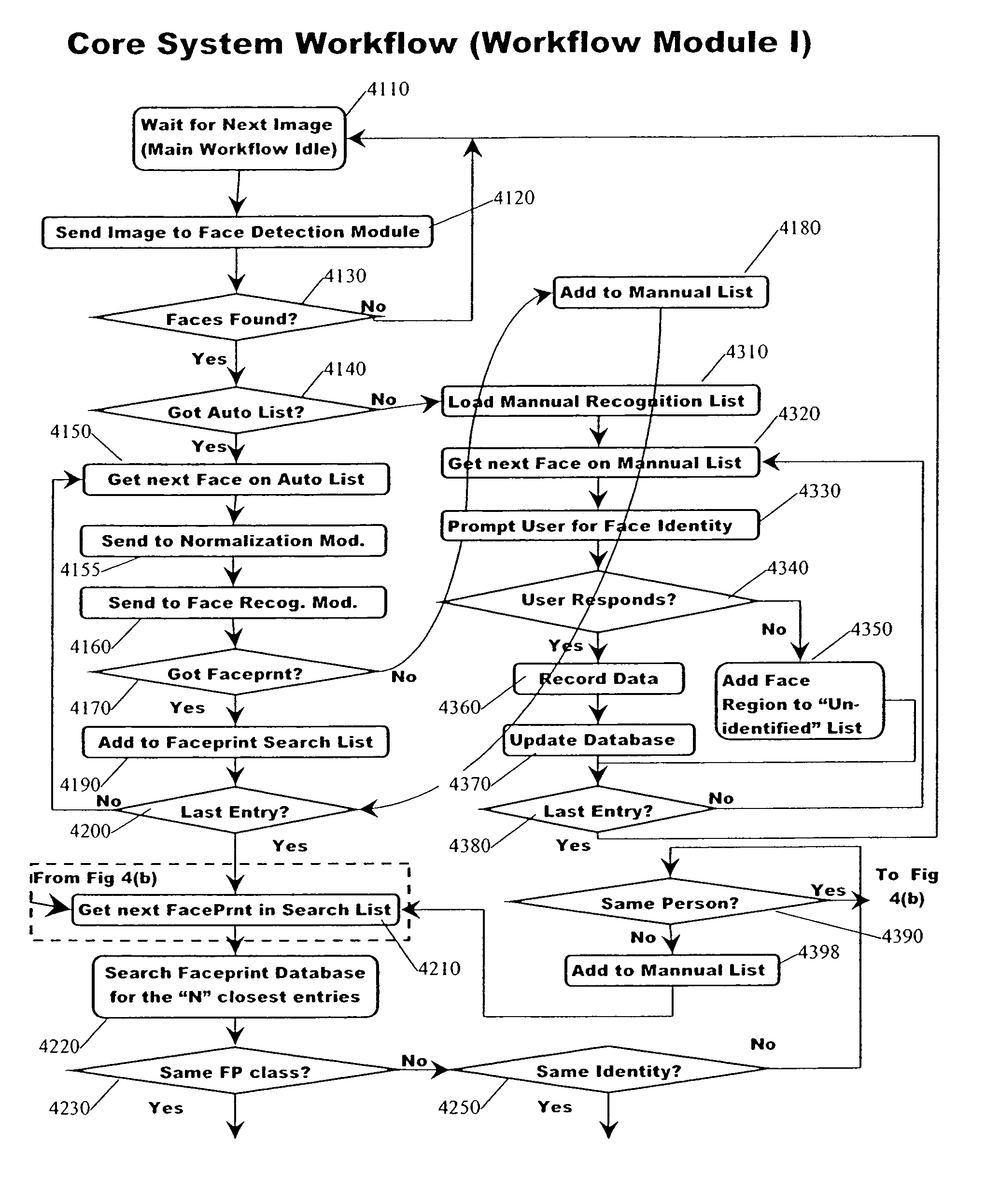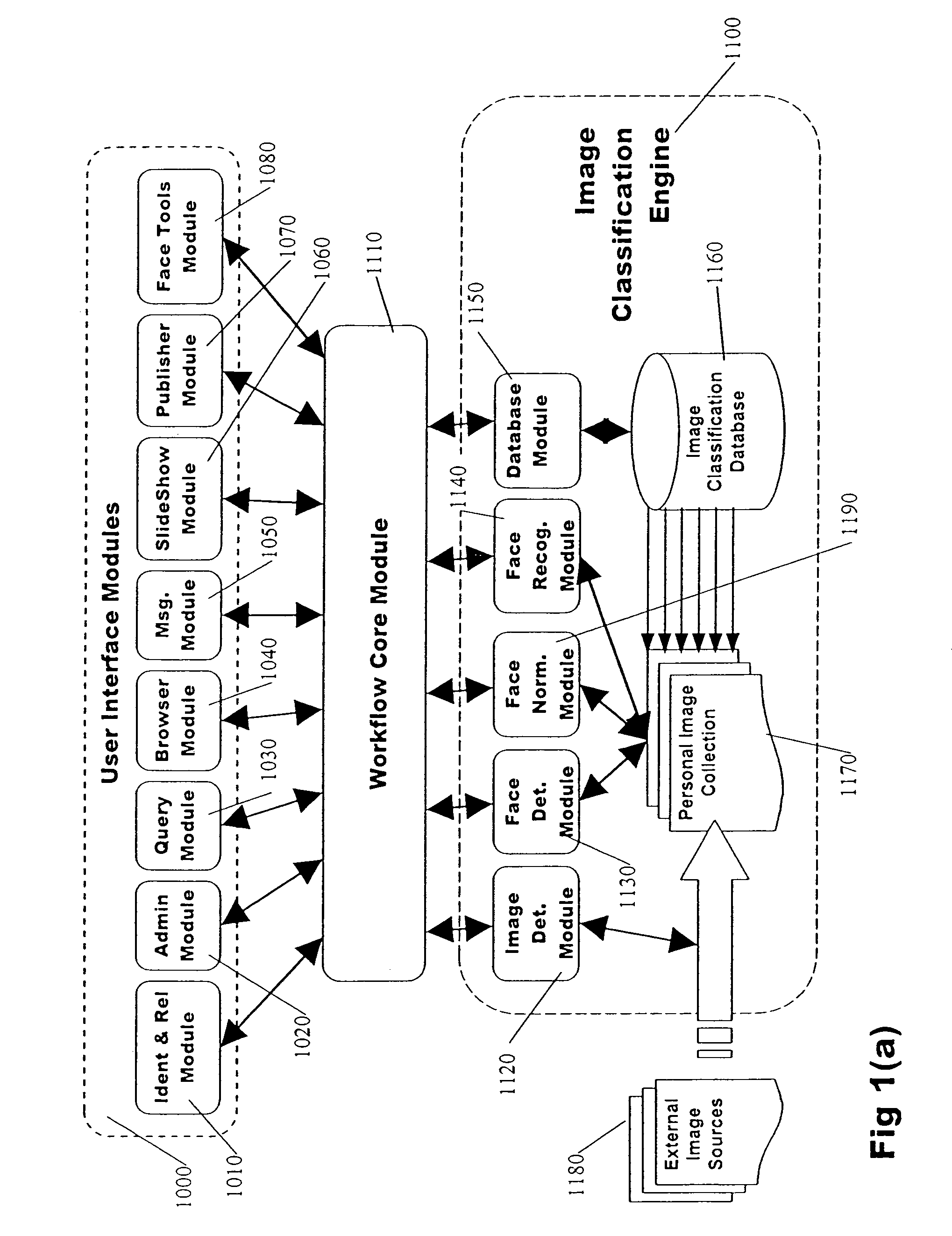Classification and organization of consumer digital images using workflow, and face detection and recognition
a digital image and workflow technology, applied in image data processing, computer security arrangements, transmission systems, etc., can solve the problems of not teaching explicitly to utilize face recognition in conjunction with these techniques, unable to use face recognition as a means to compile or manage image data, etc., to teach image processing techniques in the management or access of data
- Summary
- Abstract
- Description
- Claims
- Application Information
AI Technical Summary
Benefits of technology
Problems solved by technology
Method used
Image
Examples
Embodiment Construction
[0104]A system, method and techniques are now described for applying digital image processing using face detection and face recognition techniques to identify the persons contained within a digital image, which may be part of a personal or other image collection. An exemplary database structure is also described, for sorting, grouping, accessing, browsing and / or managing images based on the identities of the persons found within an image.
[0105]Additionally, workflow techniques are described which (i) simplify the initial training of the face recognition module when it is initialized for a new collection of images; (ii) allow the user to select between a number of alternative persons when the face recognition module is uncertain of the identity of a particular face located by the face detector module; (iii) allow the user to enter details of a new face which should be added to the list of known persons; and / or (iv) allow the user to construct database queries based on the persons ide...
PUM
 Login to View More
Login to View More Abstract
Description
Claims
Application Information
 Login to View More
Login to View More - R&D
- Intellectual Property
- Life Sciences
- Materials
- Tech Scout
- Unparalleled Data Quality
- Higher Quality Content
- 60% Fewer Hallucinations
Browse by: Latest US Patents, China's latest patents, Technical Efficacy Thesaurus, Application Domain, Technology Topic, Popular Technical Reports.
© 2025 PatSnap. All rights reserved.Legal|Privacy policy|Modern Slavery Act Transparency Statement|Sitemap|About US| Contact US: help@patsnap.com



